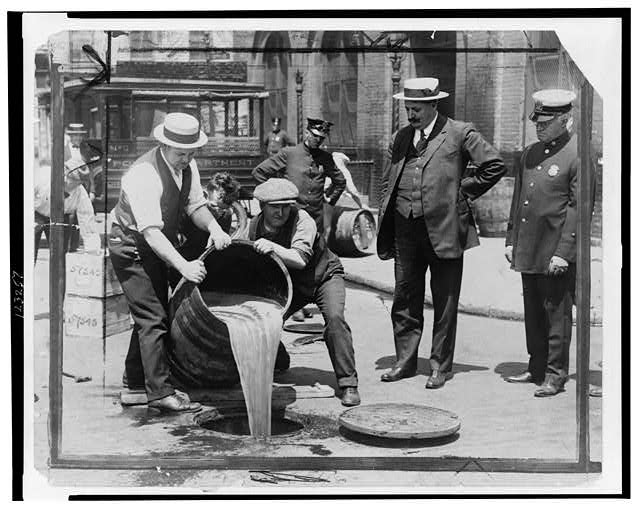Yuto Nakajima
Introduction
Despite the fact that history remains permanent and unchanging as time passes, the nature of history fluctuates with historians revisiting the past with new ideas and philosophies. Although the 1920s took place a century ago, historians since then have often revisited this decade which still exists as one of the most influential and progressive eras within history.
Countless forms of media have explored the themes and culture of the 1920s. However this blog post will be examining Charles W. Eagles’s article “Urban-rural conflict in the 1920s: A historiographical assessment.” from 1986 as well as Maw Ngai’s article “Nationalism, immigration control, and the ethnoracial remapping of America in the 1920s” from 2007. While both these articles explore two different topics from the 1920s, similarities as well as some minor differences can be spotted between the writings of both authors.
Urban vs Rural Conflict
Eagles writes a compelling article and historiographical assessment which analyzes the growing conflict and tension between urban and rural settlers. Ideas and policies such as prohibition and flappers became the subject of this growing tension. Urban fashion and trends was opposed by rural settlers who prefered traditional values. Additionally, while urban settlers opposed prohibition, rural citizens were not as resistant.1
Urbanized citizens saw rural Americans as out of touch as modern trends took longer to reach rural areas. Rural Americans were also often associated with conservatism and anti-immigrant sentiment. Urbanized Americans prefered a more progressive outlook.

Nationalism and Immigration Control
Within her article, Ngai expands on American nationalism and how strong it was during the 1920s. This strong sense of nationalism sparked radical ideologies and immigration reform. Racial policies such as the 1924 Immigration Act was one of the major byproducts of strong American nationalism. Ngai goes into further detail about ethnoracial remapping, which were mapping laws which strategically shaped demographics within America. 2This strategic mapping undermined cultural groups and their power while further fueling American nationalism.

Similarities and Differences
Although Eagles and Mgai cover two different topics from the 1920s, both articles follow very similar themes. Both articles discuss the “us vs them” narrative which held a strong influence during the 1920s. For Eagles, the “us” can be seen as urbanized settlers who viewed rural settlers as “them”. Mgai’s article discusses this same trend with race instead. American nationalists can be seen as the “us” while immigrants are seen as “them”. This similarity in theme and narrative promotes the idea that the 1920s was a very inclusive time period. Despite the fact that this time period may be seen as a very “progressive” period, there was a lot of conservatism which fostered this “us vs them” trend of the 1920s.
Both articles written by Eagles and Mgai were written about 2 decades apart with Eagles’s article being written in 1986 and Mgai’s article being written in 2007. 20 years in terms of American history is not a significant amount of time. And considering that both 1986 and 2007 took place a long time after the 1920s, it is easy to see how both articles have a more modern outlook on the 1920s. As a result of these two factors, it becomes clear that Eagles and Mgai’s articles don’t hold strong differences when it comes to exploring the 1920s. Both articles explores different themes, yet they talk about the same phenomena. Both 1986 and 2007 are considered to be part of the modern contemporary era. Both years are long passed the time of industrialization, urbanization, and racial segregation. As a result, it is clear that the modernity of both years have influenced both authors into taking on the similar points in their two separate articles. For a modern person in America, concepts such as immigration quotas and rapid urbanization are foreign. Furthermore, for both modern authors, the “us vs them” phenomena stands out the most.
Bibliography
- Eagles, Charles W. “Urban‐rural conflict in the 1920s: A historiographical assessment.” The Historian, vol. 49, no. 1, 1 Nov. 1986, pp. 26–48, https://doi.org/10.1111/j.1540-6563.1986.tb02006.x.
- Ngai, M. M. “Nationalism, immigration control, and the ethnoracial remapping of America in the 1920s.” OAH Magazine of History, vol. 21, no. 3, 1 July 2007, pp. 11–15, https://doi.org/10.1093/maghis/21.3.11.
- Eagles, Charles W. “Urban‐rural conflict in the 1920s: A historiographical assessment.” The Historian, vol. 49, no. 1, 1 Nov. 1986, pp. 26–48, https://doi.org/10.1111/j.1540-6563.1986.tb02006.x. ↩︎
- Ngai, M. M. “Nationalism, immigration control, and the ethnoracial remapping of America in the 1920s.” OAH Magazine of History, vol. 21, no. 3, 1 July 2007, pp. 11–15, https://doi.org/10.1093/maghis/21.3.11. ↩︎
